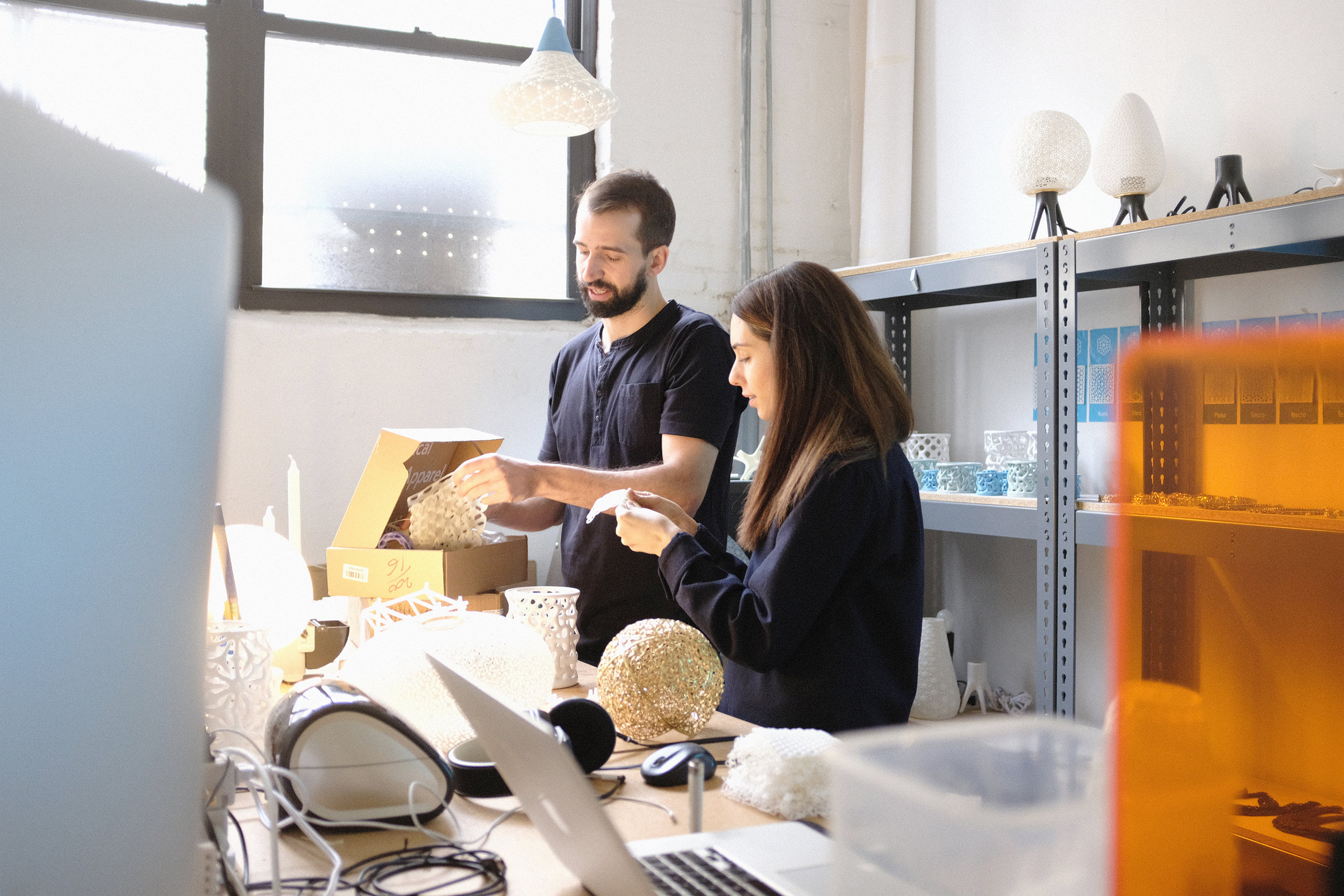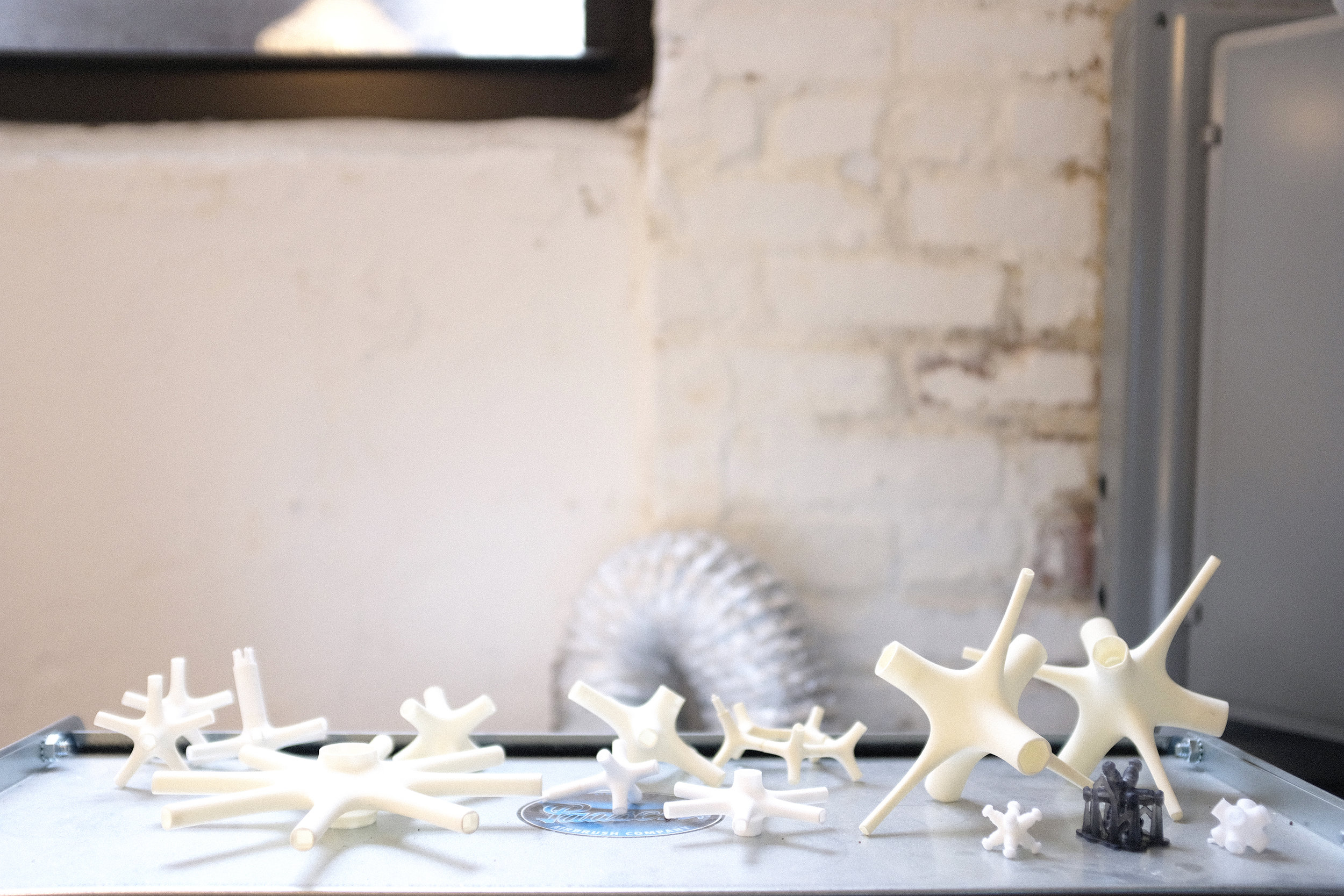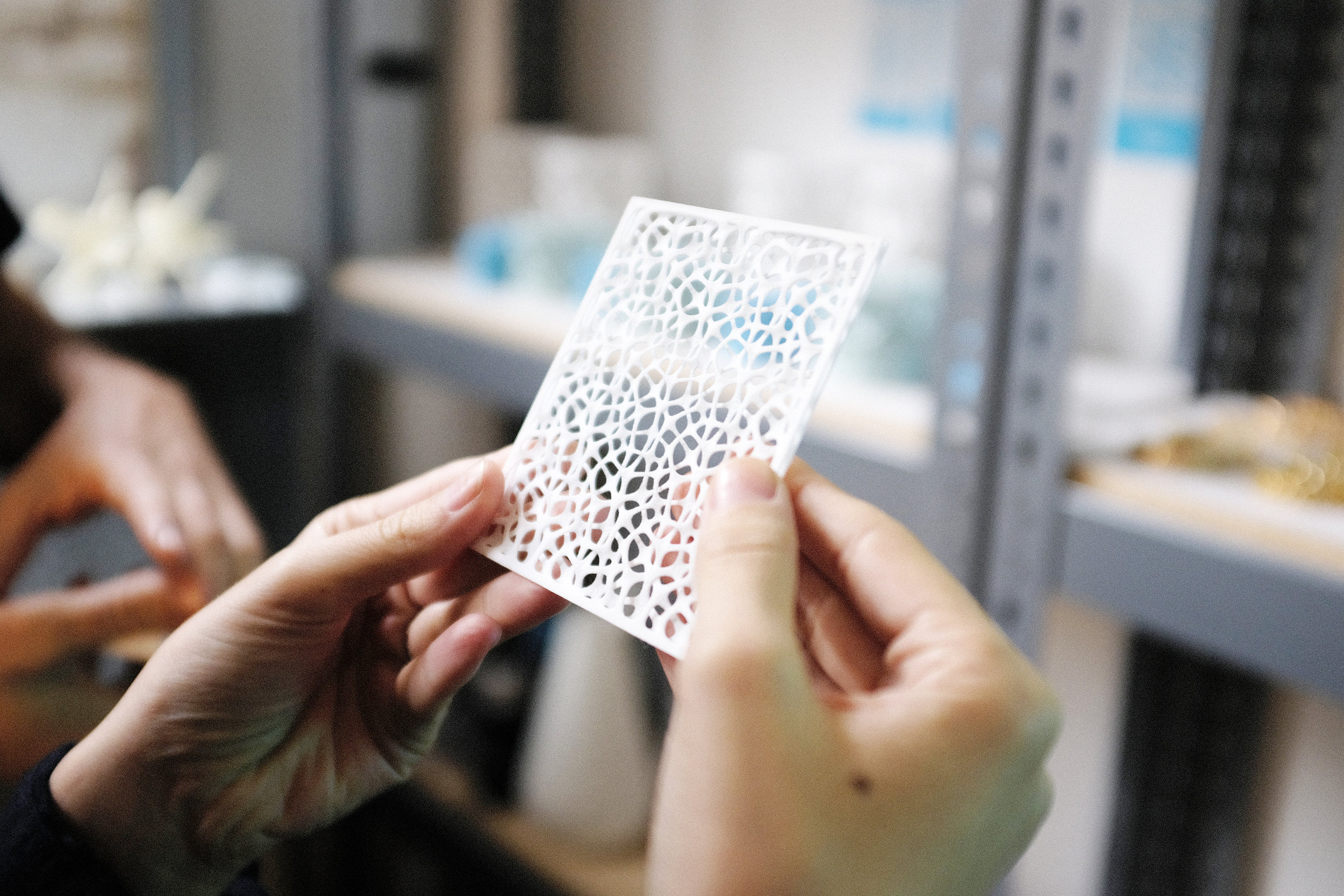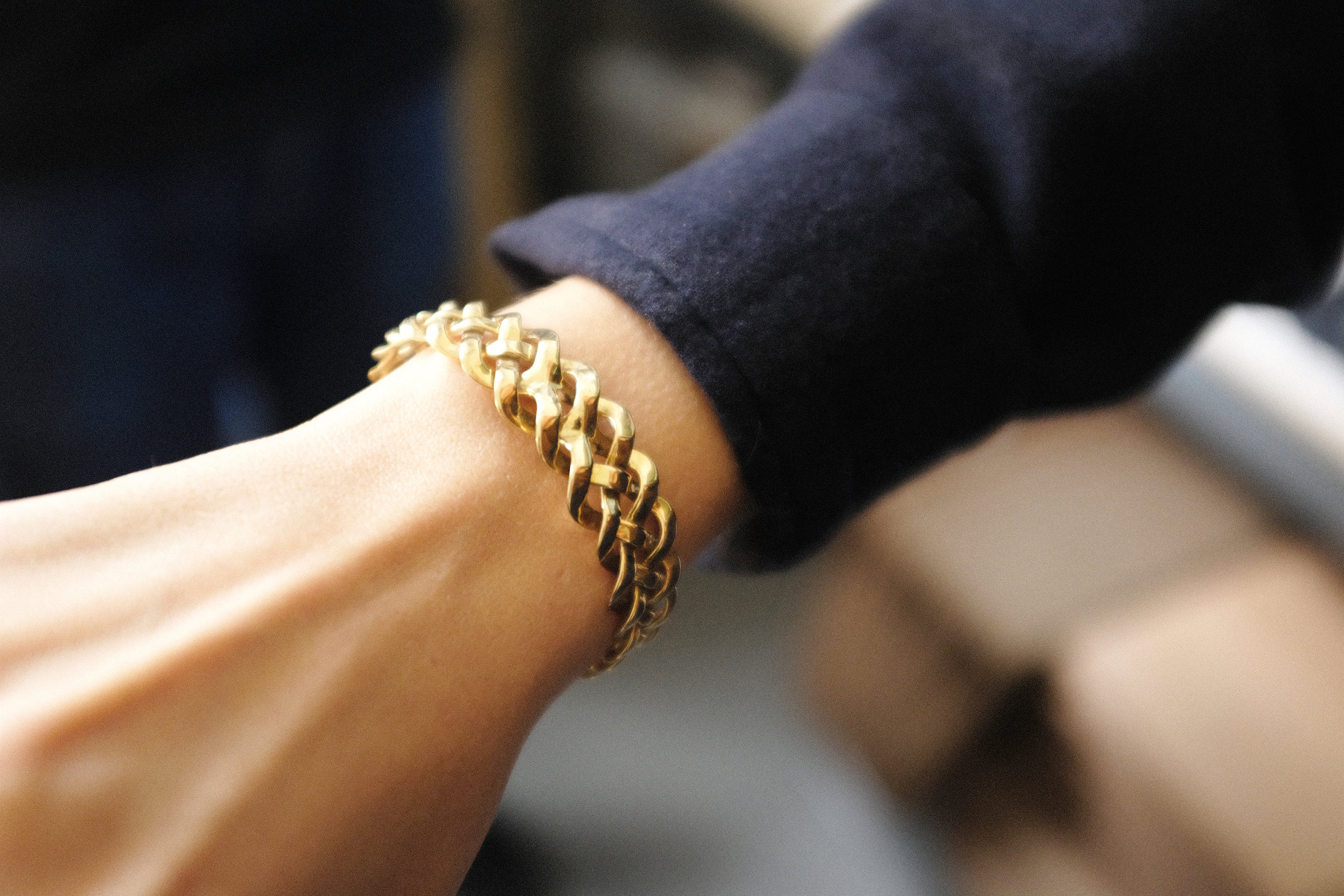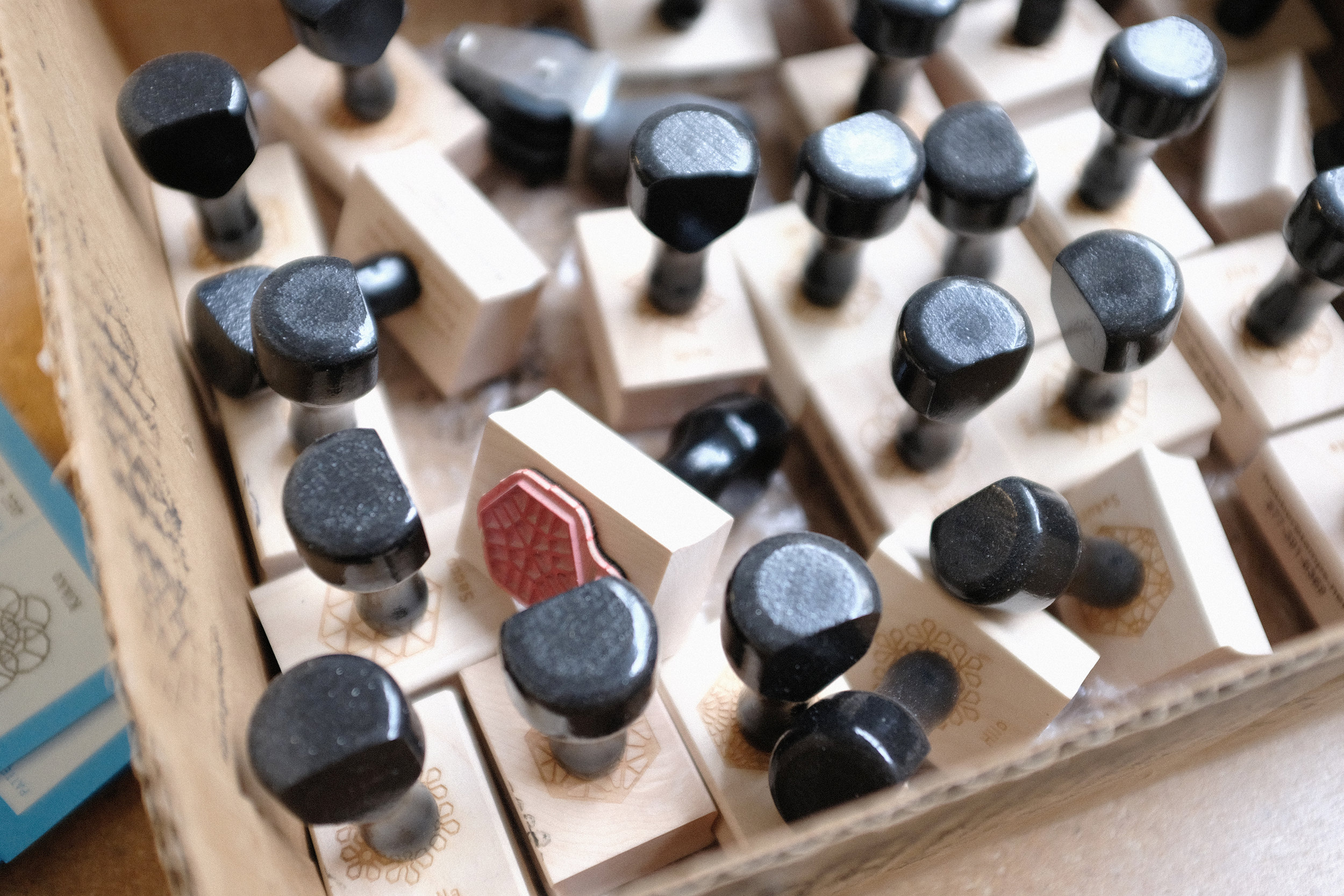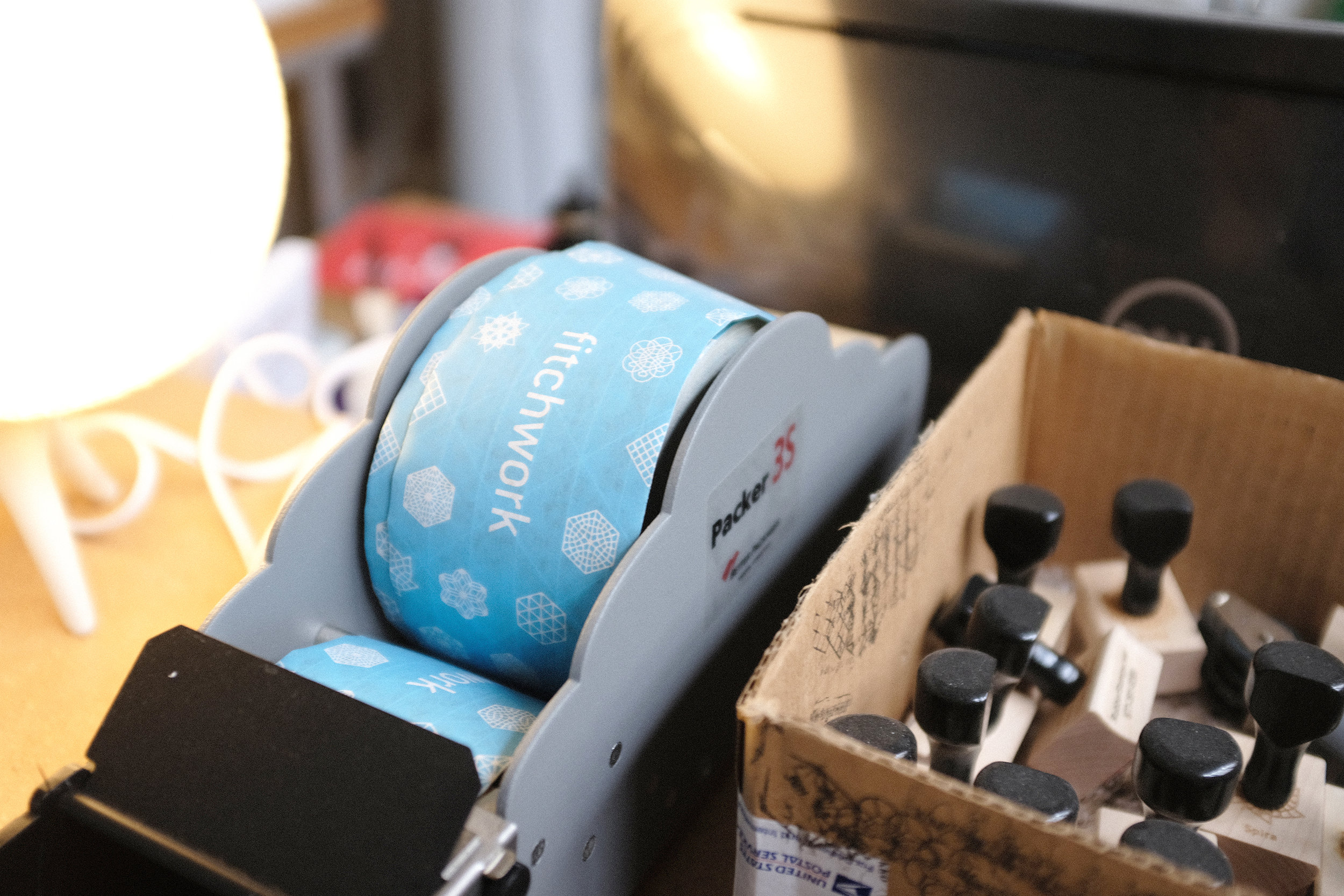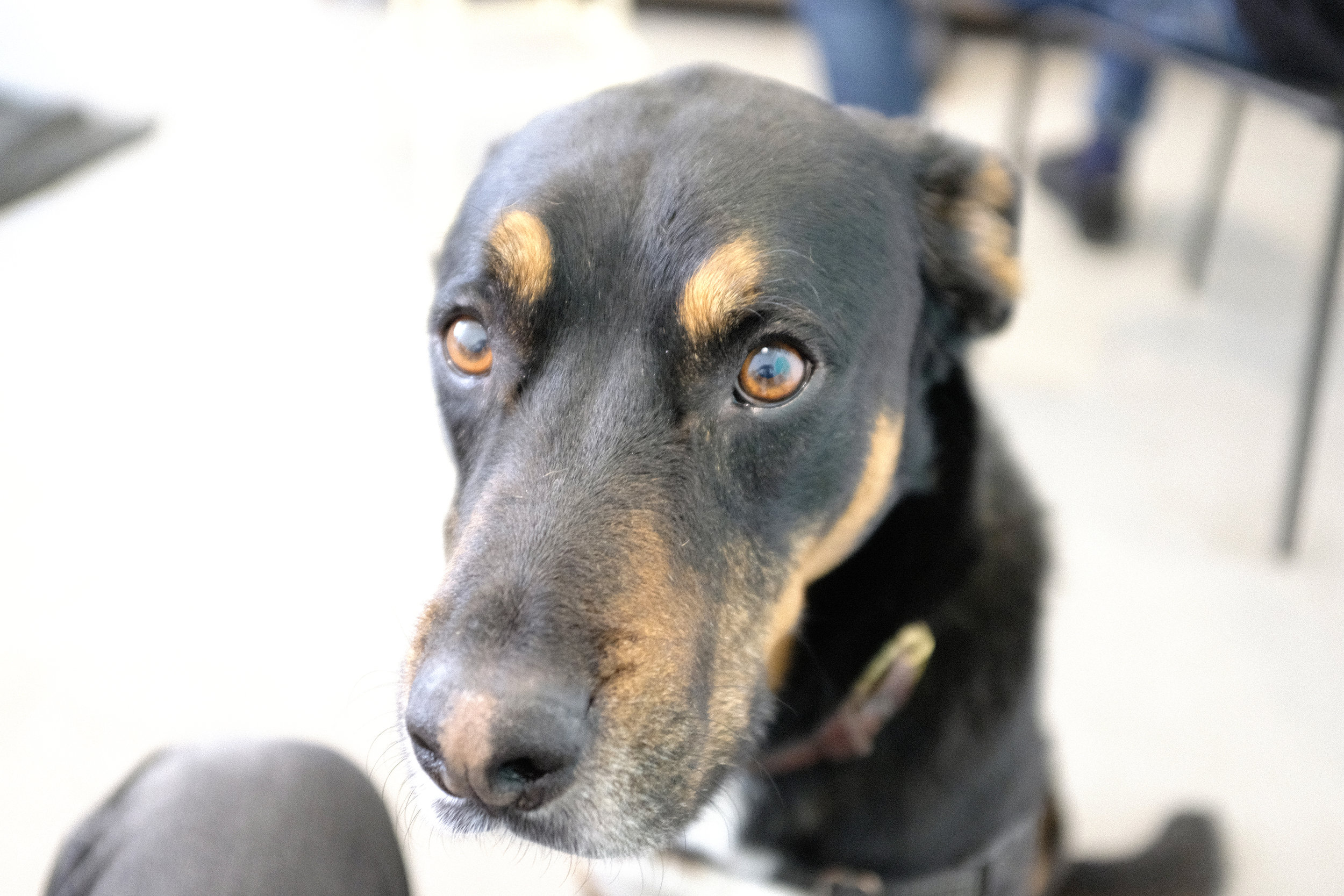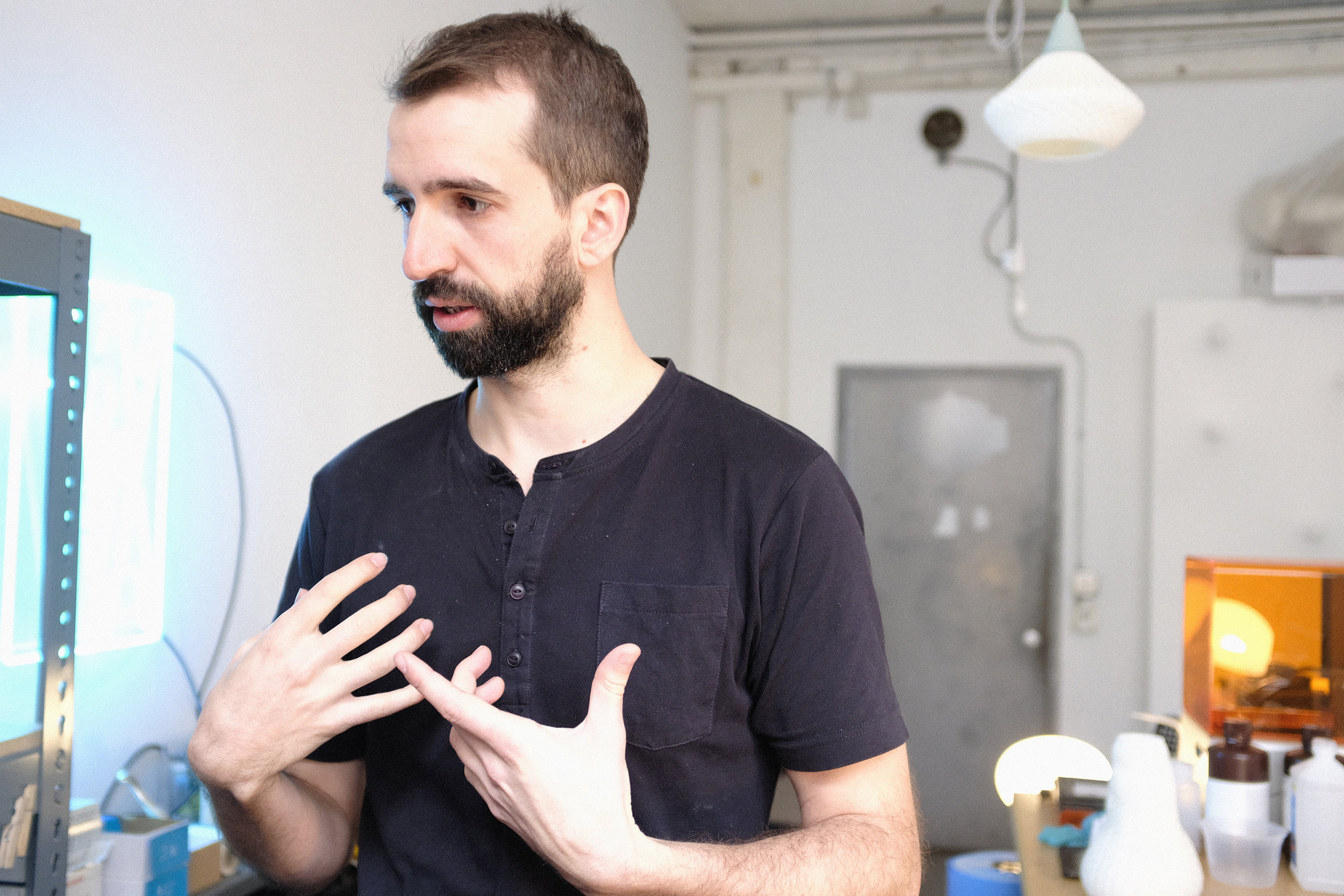1 APR 2018
BUSHWICK, New York City
Disrutping conventions one beautifully crafted object at a time.
Fitchwork's founder Travis Fitch talks about his journey through design, hard work and entrepreneurship.
"By the time I decided to start Fitchwork, I had already done all the experiments and explorations; I knew what I wanted to make but had no clue how to turn it into a business."
travis fitch
Travis Fitch was raised in an off-grid house by artists in the desert outside Santa Fe. After studying architecture at Cornell University, he spent five years designing for Diller, Scofidio + Renfro in New York. But what matters more than his resumé is the stuff that keeps him up at night—like if we’re all going to buy identical, stripped-down objects only to spend so much time dressing them up, maybe it’d be a good idea to create things that have some personality to begin with. And if up to this point design has been hemmed-in by material properties, what kinds of crazy stuff could we be making now that we have the technology to fabricate on-demand anything from an intricate silver bracelet to a chair?
In 2016, Travis founded Fitchwork to be a partial answer to those questions, drawing on mathematics, primordial shapes, and the belief that ornament isn’t a dirty word. It’s also just the tip of the iceberg.
Travis, you were brought up by artist parents on an off-grid house in the desert near Santa Fe. How did this influence your childhood and subsequently steered you towards the field of design?
Around the time I was born, my parents bought a piece of land in the middle of nowhere up the most epic two and half mile dirt road. They had a vision for how they wanted to live. Even though building a house was well out of their realm of expertise, they figured it out. They read books and would order parts they needed from the Whole Earth Catalogue in California. They are both artists and teachers, my mother is a painter and my father is a photographer. At the time they would teach throughout the year and spend their summers building the house, living out of a van and teepee on the land. Thirty years later, the house and all its systems are still fully functional.
As a kid I was around construction all the time. Apart from the house, my dad would build water tanks in the desert, mostly for the joy of making, and I would always help him mix concrete and lay adobes. My parents are always working on something when they are not at work. I call it parallel play, when they are next to each other but doing their own work simultaneously.
You have previously worked at Diller Scofidio + Renfro in New York, one of the most innovative architecture and design practices of our time. How did this experience affect the way you think and work?
Diller Scofidio + Renfro is a practice where fast pace and high quality go hand in hand. We often had limited access to design critiques from the partners so for me it was important to be self-motivated, be critical of my own work and take ownership of what I was designing. It was an eye-opening experience that came down to asking ‘before it is good enough for your boss, is it good enough for you?’
It is also an office with a strong interest in iterations, full scale mock-ups and prototyping. Space, form, scale and user experience have to work together, and I think the success of their design projects comes from that synthesis. How a design interacts with humans was as important as how it looks. The office radically changed my understanding of how people use and inhabit architecture.
"Space, form, scale and user experience have to work together, and I think the success of their design projects comes from that synthesis."
Each vessel is slip-cast from porcelain in a 3D mold and kiln-fired
Nylon lamp shades set on custom, slip-cast tripod bases
Did you always have an affinity for patterns and what inspired you to start Fitchwork?
I am interested in the parts you build a building with as much as the overall building itself. For my thesis at Cornell, I had set out to investigate modular blocks and possibly construct a machine that makes them. In a way, you could say my choice was connected to my early experiences at home laying adobe. One day, I came across Erwin Hauer’s work and it really resonated with me. My interest in blocks transformed into a total obsession with geometry and modular systems. This new frontier felt like a wilderness that I could approach and dive into. And I did just that.
When I was working at Diller Scoffidio + Renfro, I would come home and work on my own designs late into the night. I was constantly testing patterns, 3D printing samples and developing my own language and methodologies. By the time I decided to start Fitchwork, I had already done all the experiments and explorations; I knew what I wanted to make but had no clue how to turn it into a business.
"When I was working at Diller Scoffidio + Renfro, I would come home and work on my own designs late into the night."
Pattern studies and experiments
Your Studio offers custom made designs in a variety of forms, patterns and materials. How is today's on-demand economy shaping your business model and as a result, your design process?
Mass customization was a big part of my research and a subject that excites me very much - the possibility that you can fabricate objects and products based on the users' specific preferences. In the beginning, I was a big proponent of open ended systems in which a user could make anything they wanted. Now I am in favor of a more controlled and curated process. If the system is too open, what is our role as designers? At some point, one has to take a position and say, "this is my aesthetic".
I also think the fabricate-on-demand model gives creative freedom to the designer. I find it incredibly difficult to say, "this is my best iteration and my final design". How does one define the parameters of being the "best" one? Some may argue it’s the one that sells, but I also happen to like the ones that don’t.
"There is a general misconception that 3D printing is a magical process. While the actual fabrication is automated, getting there requires enormous effort and craft, along with a thorough understanding of material constraints."
"You don’t want people to go wow and then huh?; what you really want is for people to go huh? and then wow."
We are intrigued by the variety of high quality materials you work with, how does material property influence your thinking and affect your process of fabrication?
There is a general misconception that 3D printing is a magical process. While the actual fabrication is automated, getting there requires enormous effort and craft, along with a thorough understanding of material constraints. How a pattern is applied to an organic shape is one of the most challenging parts of my designs. The fabrication process is just a tool, and by no means a way to define the practice or the identity of Fitchwork.
I do very little of the actual fabrication myself. These machines cost anywhere from half a million to a million dollars, so it makes sense to collaborate with localized fabrication centers. I do however assemble, wire and finish everything in house. I care a lot about the brand experience, and package and ship everything myself.
The cost of 3D printing is directly tied to material volume, hence each design is optimized to be light, durable and flexible while using the least amount of material possible. Laser printed nylon is a favorite material of mine, as it is very strong and precise, allowing you to do delicate work. I also like to work with ceramic—It took a while to figure out the limitations of this process, but the results are really beautiful.
Brass, silver and bronze cuffs and rings cast from wax 3D print
What is your vision for Fitchwork?
What I do now is only a fraction of my interests as a designer. I love all scales of form making, and I am interested in future collaborations with designers of different backgrounds. I love the idea of making things that reveal themselves, that look simple but are made extraordinarily well. You don’t want people to go "wow" and then "huh?"; what you really want is for people to go "huh?" and then "wow".
We love that you work in different scales - from jeweler to household products, and recently, 3-D printed dresses! In your opinion, how will the access to technologies like digital software and 3-D printers influence the future of fashion and design?
The dress studies are a three-way collaboration. We used a highly specialized printer that has the capacity to blend together different materials. You can control the color and the stiffness of the plastic within one print. The dresses are couture, very expensive and not exactly practical to wear on the street. The material is not particularly functional, but I loved working with it because it gives you an intensity of choice; and that is where the value lies. People are not necessarily going to wear plastic and I think it is not fair to ask them to do so. Having said that, these dresses are very relevant as design explorations.
In the future, I’d love to explore hybrid pieces that combine 3D printing with different material assemblies, like laser cutting or traditional garment construction. I think the material assembly of different fabrication techniques can be very interesting—for example, 3D printing directly onto fabric is going to radically change fashion.
"The fabrication process is just a tool, and by no means a way to define the practice or the identity of Fitchwork."
Do you imagine similar fabrication methods can one day be applied to a much larger scale, like building façades and infrastructures?
I do not like the idea of a house that is 3D printed magically on site. Architecture is still a set of pieces put together by people; beams, ducts, pipes, finishes. I don’t think that will change. I love the idea of 3D printing components and figuring out how to turn modular structures into a facade, ceiling, or wall.
Each seat is made of 7 different 3D printed segments that get bolted together
"Before it is good enough for your boss, is it good enough for you?"
What would you advice young designers interested in establishing their own brand?
I still wake up at night terrified. In many ways, I stepped away from a career in Architecture for this crazy experiment. But I am happy and I like what I do. For me doing something that I loved was key. So, my advice would be think hard about what you like to do and how it could translate into value. Working for yourself can be very solitary and so much of it is a learning process. Remember to ask the hard questions and surround yourself with people that you trust and who will give you their honest opinion.
World's sweetest studio companion, Charlie
Thank you Travis for taking us through your journey of founding your own design studio. For more information on Fitchwork, please see the company's website here.
If you would like to read more stories about other designers and creatives at the forefront of their industry, visit our conversations page for monthly updates.
Text edited by Katie Kasabalis, Photography and layout by Darius Woo



